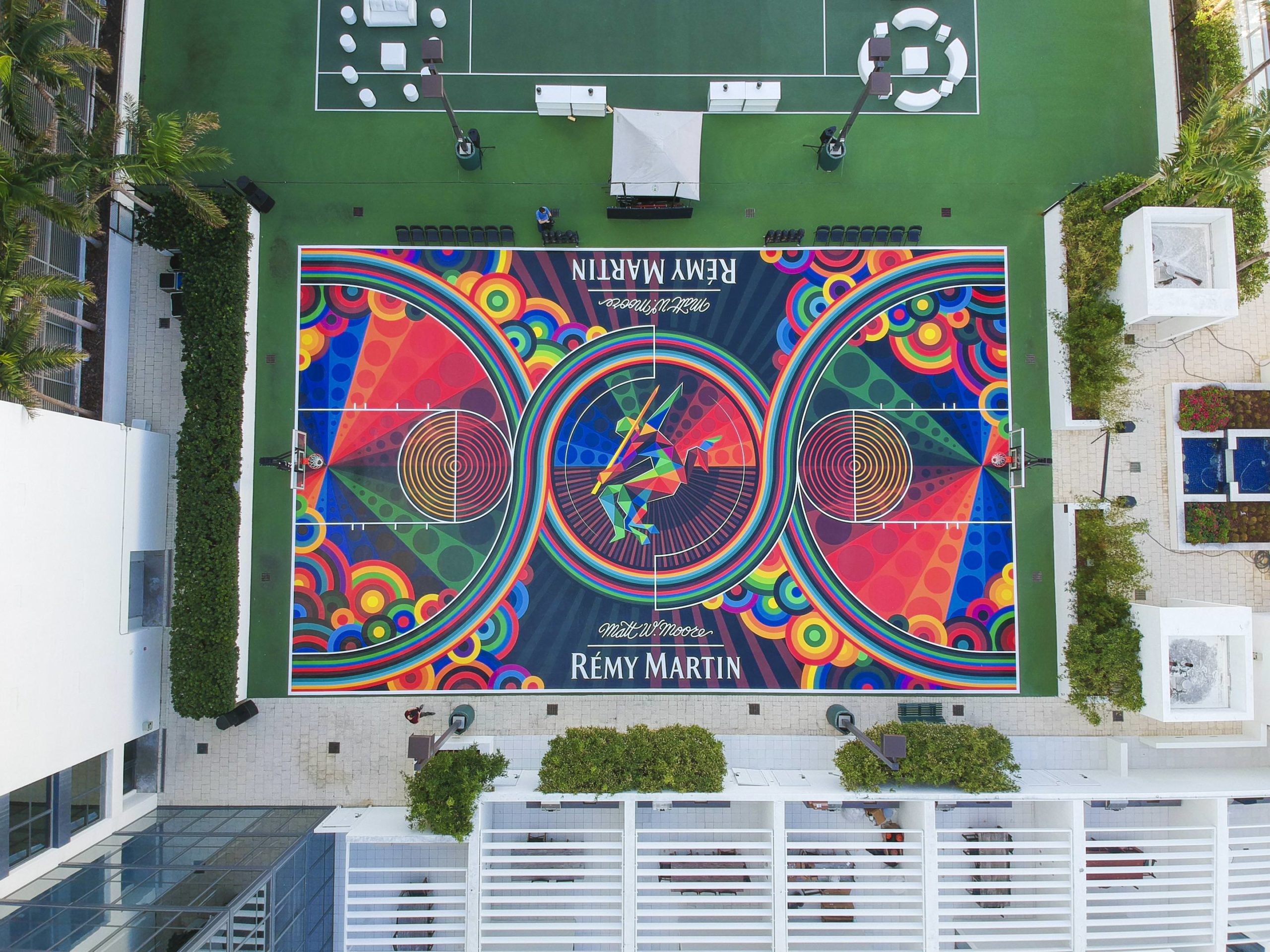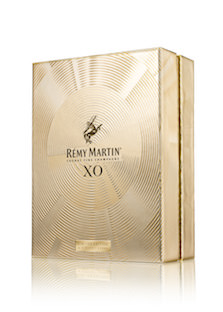Cognac. To some, it’s a familiar sip. To Rémy Martin, it’s the result of a multifaceted study intensely developed in the Grand Champagne and Petite Champagne regions of France. Only in a quiet, rural part of the world that produces some of the finest grapes on chalky limestone grounds can one attest to the delicate and intricate liquor’s purest qualities—and don’t look for a knock-off, because, well, there plainly isn’t one.
When we took a trip to their headquarters earlier this year, Rémy Martin taught us this, along with a few key facts about cognac, for starters. Divided into six zones, this region in France is the only area in which legally recognized cognac can be made, and Rémy Martin’s Fine Champagne—a blend of cognac coming from the Grand and Petite Champagne regions—is known for its aging process standards, as the cognac typically matures in oak casks for longer than the industry norm. After the land’s grapes are harvested and distilled twice, the brand has a young eau-de-vie—the first result of a grape’s fermentation and double distillation process, a clear, colorless liquid that is high in alcohol by volume and low in fruitful taste. Once the eau-de-vie is approved, it develops in casks in the brand’s cellar, with its future mapped out by the grand cellar master.
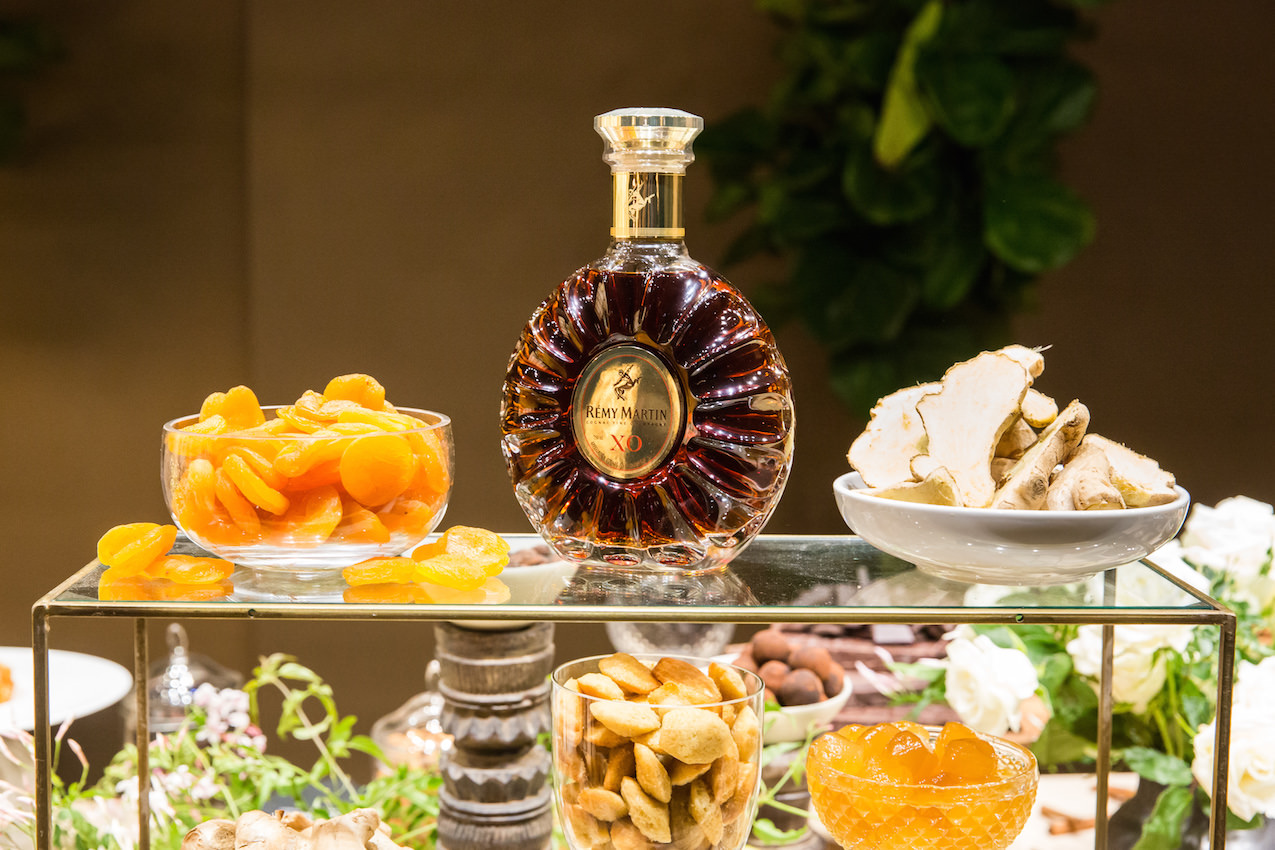
Courtesy of Rémy Martin
After departing from Paris’s Gare Montparnasse, we arrived at the Gare d’Angoulême in southwestern France, where we reached its home base in Touzac, snugly tucked between grapevines and ancient architecture. The fragrance of the oak and mineral-rich eaux-de-vie clung to the air, and the key members who work tirelessly to produce this delicately balanced cognac are present at nearly all times.
Upon arrival, we explored the vineyards with Sonia Sicaire—the brand’s partner wine grower, who, after many blind taste tests by the grand cellar, has time and time again proved her grapes worthy of Rémy Martin’s cognac. Sicaire frequently conducts acid and sugar level chemical tests to ensure that her grapes are healthy. This rough ground’s underbelly is the only base that can produce this type of rare grape, so she must be sure of its chemical makeup, as she also establishes the vines, tends to the yards, and distills the wine herself.
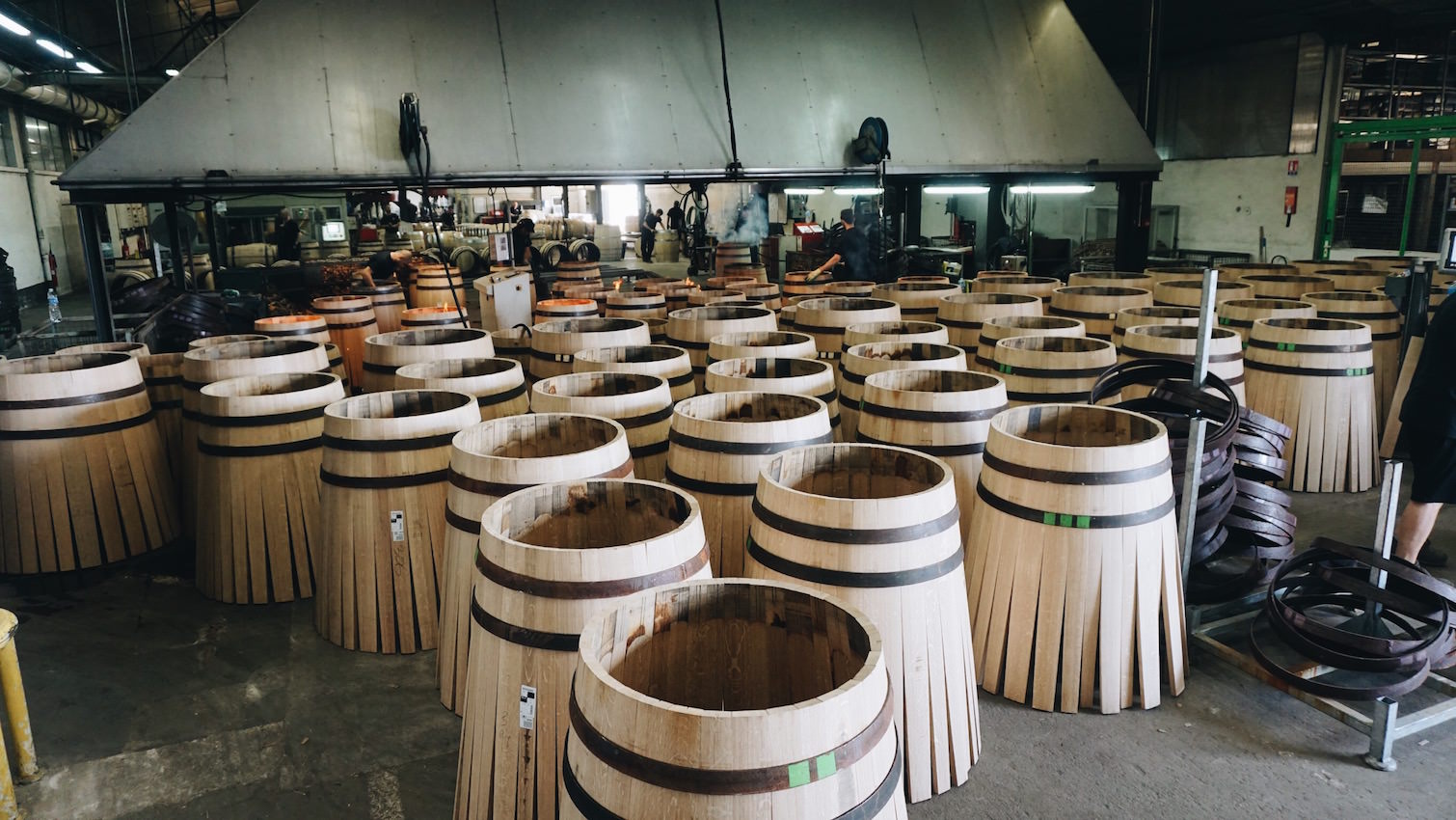
Courtesy of Rémy Martin
After roaming the grounds, and picking sweet cherries from the surrounding wild trees, we toured the brand’s historic maison—a landmark structure built in 1724, during the brand’s foundation year, and recognized by the King of France in 1738. In its courtyard, we saw some of the first tools and barrels used to produce cognac in its beginning days, before making our way to the point overlooking the brand’s backyard—a magnificent backdrop for a lesson in tasting, paired with sweet foie gras.
From there, similarly to the brand’s prized grapes, we traveled to the distillery to meet with master distiller Jean-Marie Bernard, and to have a taste of the newest eaux-de-vie that the house had to offer. Like Sicaire, Bernard is a multigenerational member of the brand and knows this process well, with great, great grandparents having begun their journey in spirits right there in the very same place.
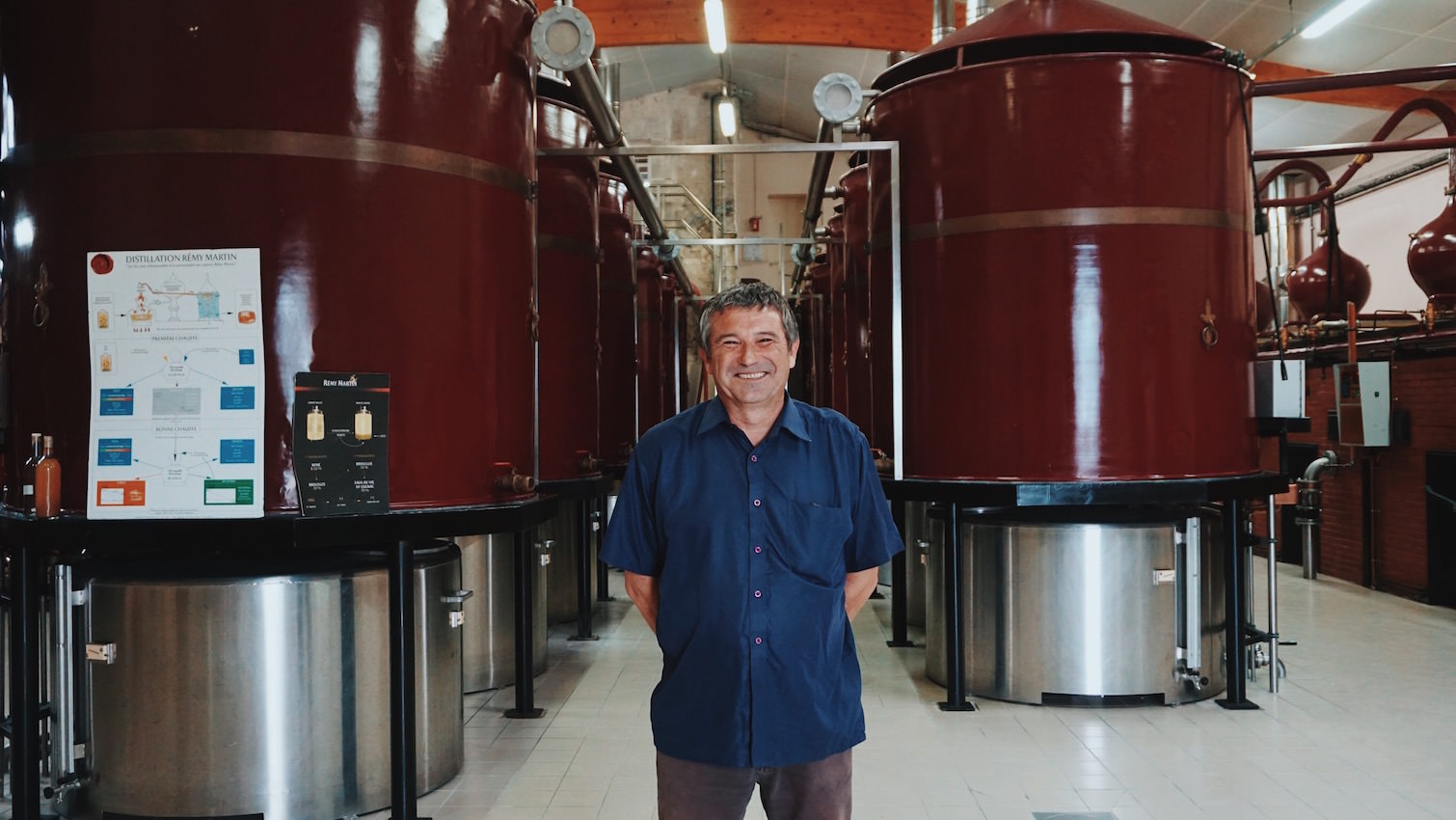
Courtesy of Rémy Martin
“It is really important to understand that you can’t become a master overnight,” said Lauren Beckett-Barbier, our guide for the trip’s duration, and Rémy Martin’s International Ambassador. “You typically need about ten years or so to really, truly understand, because every year is a new year. Every year, you have to adapt your techniques to what is going on in terms of the vineyards and the wines. Jean-Marie works very close with our cellar master to create a model—a model that we can use to advise our partners, like Sonia.”
The distillery is the only private facility used for Rémy Martin, while they work with other grow partners and their distilleries, like Sonia. Today, about 40 percent of their partners do their own distillation, and the rest only facilitate through external distilleries that are preapproved by Rémy Martin.
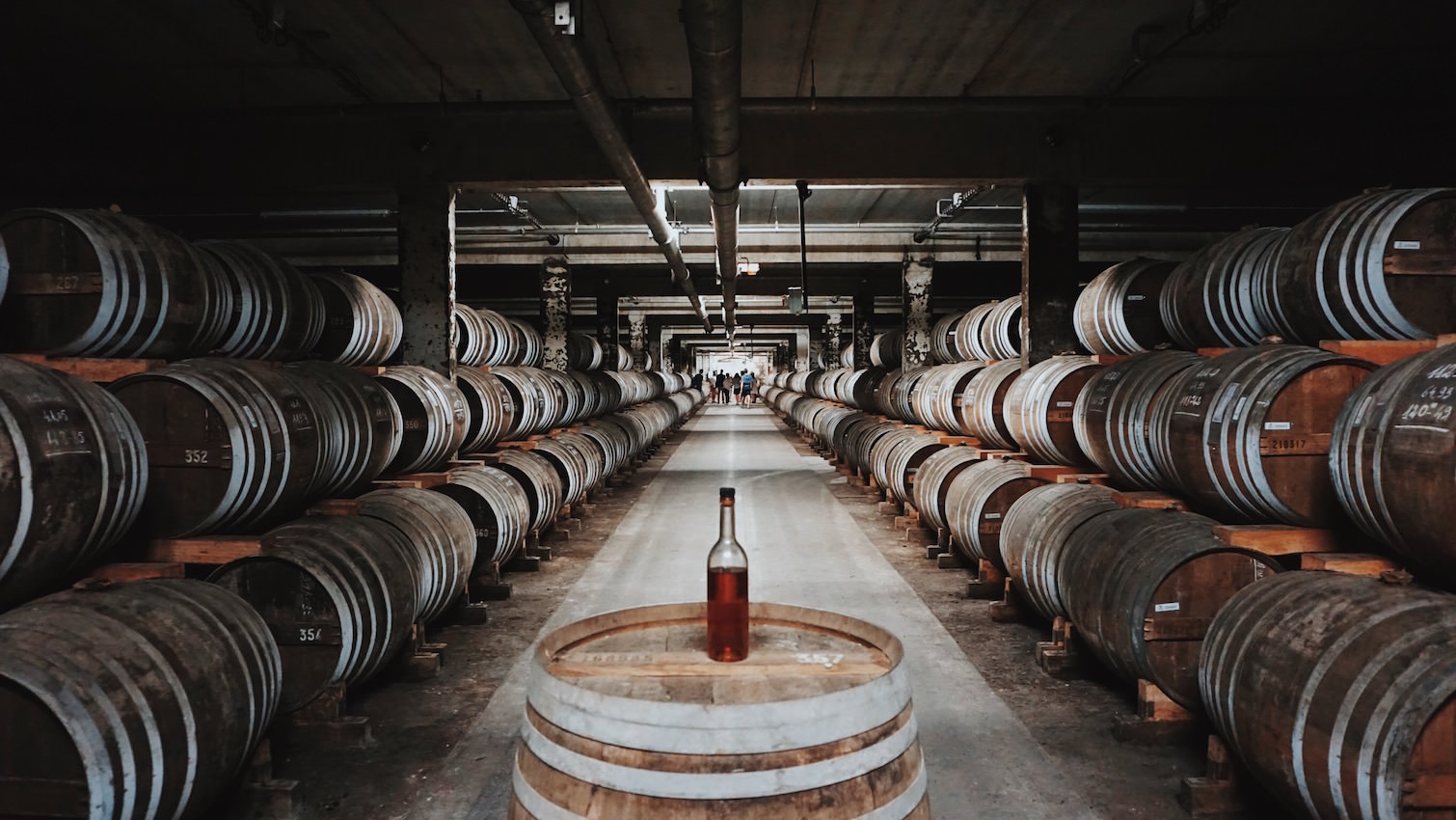
Courtesy of Rémy Martin
Our distillation lesson appropriately transitioned to an afternoon toast, a “fine à l’eau aperitive,” or cognac and water, which was the most popular drink in France before World War II. We indulged in oysters, blocks of fresh cheese, and cognac before sitting down to steak and vegetables, chocolate desserts, and red wine, all within their barn-style Domaine de Touzac, prepared by the in-house chef.
The next day, we continued our journey to see what the next step held for cognac production. We arrived at the Seguin Moreau—Rémy Martin’s cooperage—to see the expertise and selection of oak for barrels. Receiving about three truckloads of the best 100- to 200-year-old oak trees from Eastern Europe, France, and the United States every day, the cooperage separates the wood by micro-small, small, or large grain (of which Rémy Martin selects French Limousin large-grain oak for aging its blends).
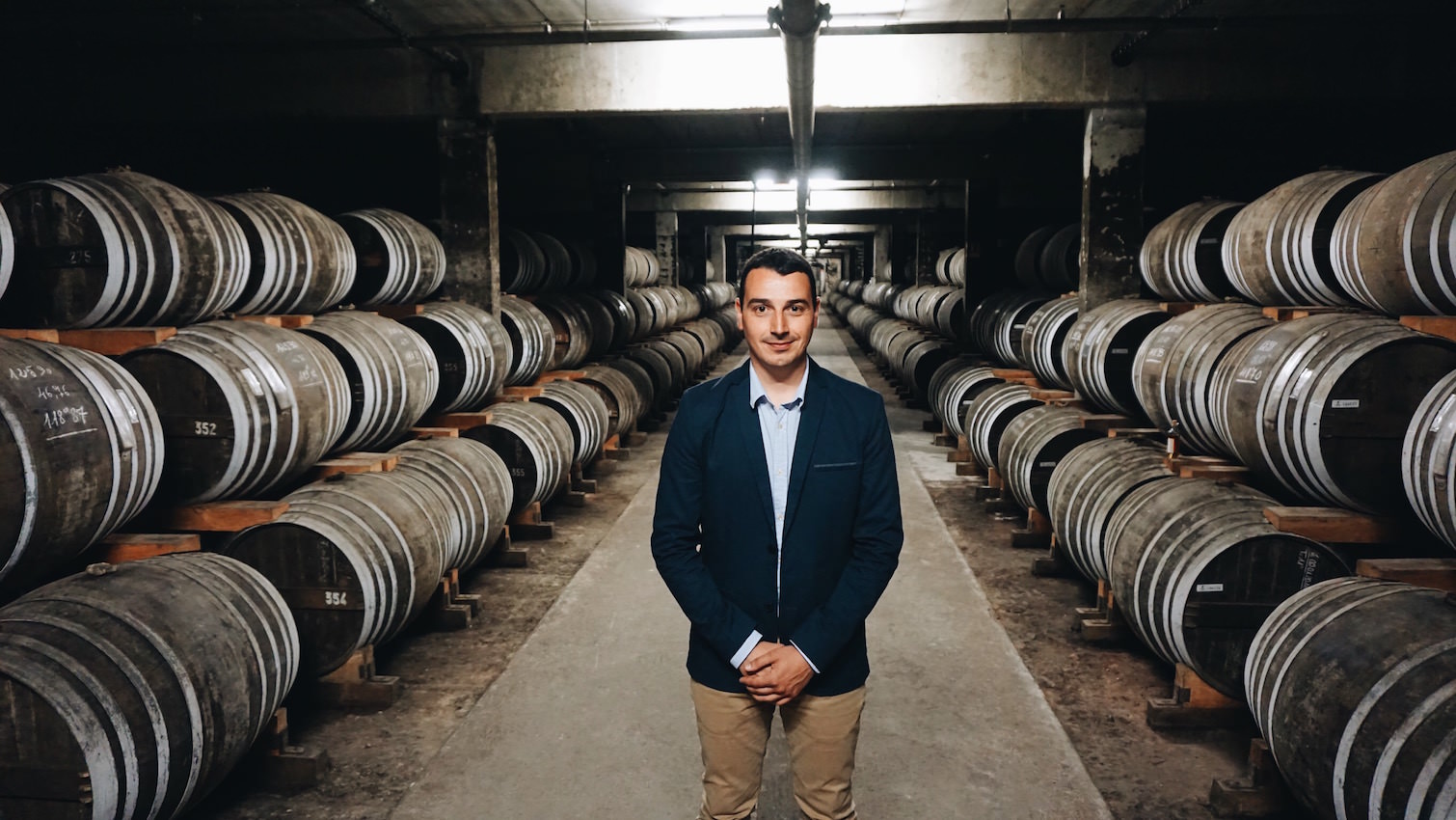
Courtesy of Rémy Martin
Just as a barrel would, we then departed for the grand cellar with a tour by the youngest grand cellar master in history, Baptiste Loiseau. Loiseau holds the key to Rémy Martin cognac, and not a single drop is approved for bottling by anyone else. “Every year, we are tasting a lot of eaux-de-vie to be sure that it corresponds to the style of the house, and I have been trained by the previous cellar master to be sure that the style of the house remains the same by this selection,” said Loiseau before walking inside. As we entered the cellars, there was a chill in the air, and dust connecting each barrel. Loiseau asked us to turn off our cell phones, as any disruption can cause a catastrophic explosion—that’s just how high the alcohol levels are.
The diverse casks are arranged meticulously in a traditional way of coding. Chalk markings on the outside of the barrels show which eaux-de-vie have been there the longest. After we were allowed the opportunity to sample the product straight from the barrel, we exited the cellar and embarked on a blending lesson to learn how to attain the perfect cognac.
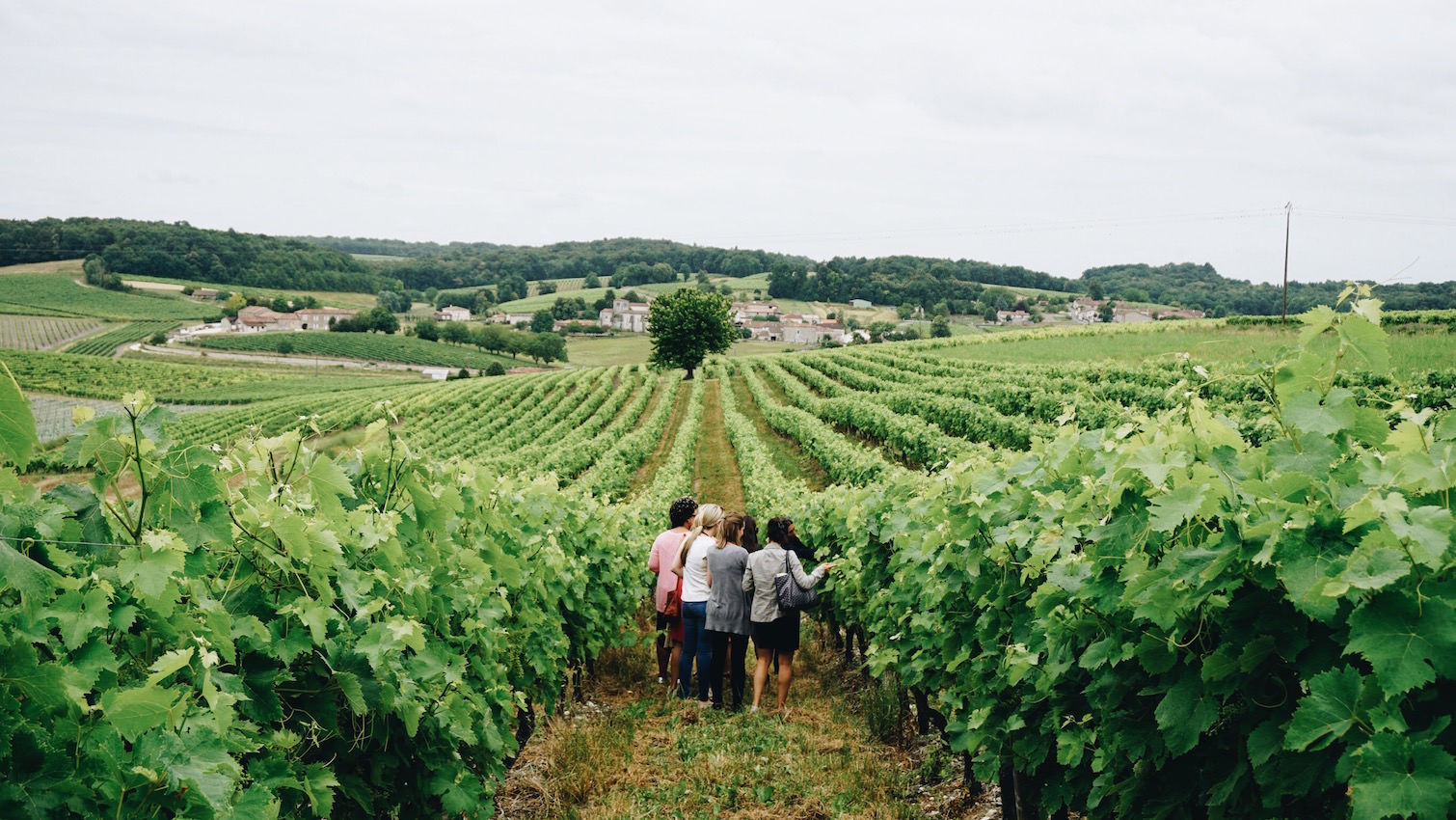
Courtesy of Rémy Martin
Before we knew it, it was time to head back to Paris, but not without a proper “Santé!” After all, toasting with cognac in Cognac was a perfect farewell, and a necessary one with Rémy Martin in hand.




